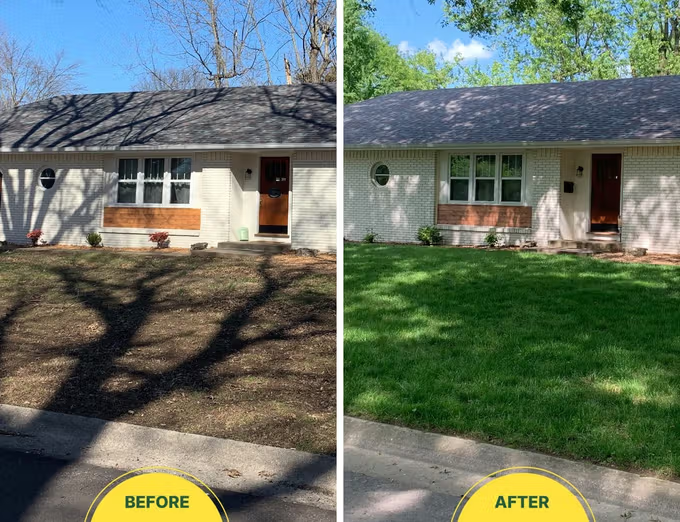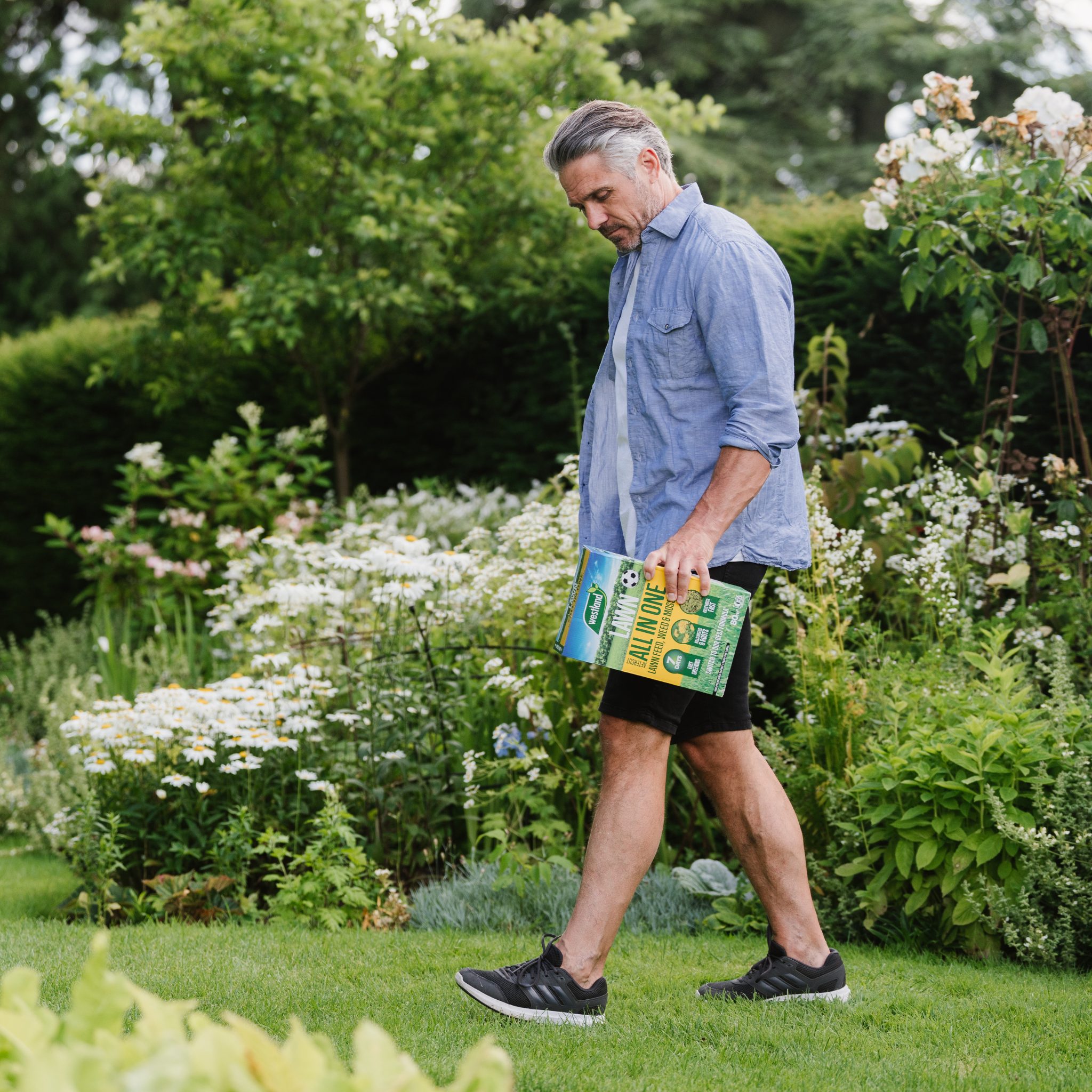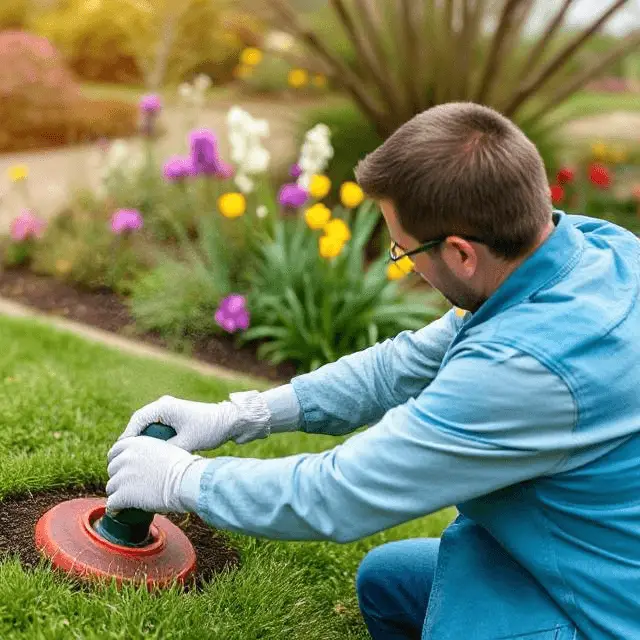6 Lawn Watering Myths You Should Never Believe
Last Updated on March 16, 2025 by Duncan
Due to the importance of watering the lawn when it comes to the survival of the lawn, the practice is marred with plenty of myths that can be misleading. To help you out, here are some of these myths that you should never believe in for you to keep your lawn in top shape:
Myth #1: Watering your lawn in the middle of the day will burn the grass
Many worry about watering their lawns in the sunshine when the summer heat arrives. This is explained by the theory that water droplets serve as magnifying glasses, concentrating sunlight and scorching the grass or leaf blades beneath.
As much as this seems like it makes sense and might be true, it’s not.
Without a doubt, you should water your plants if they appear stressed during the day. If you delay watering your sod until the evening or the next morning, it could become damaged. In some cases, it might not recover in really hot weather.
Watering the lawn with fresh water won’t cause leaf scorch. After all, not one of the hundreds of scientific studies on foliar scorch that have been done on woody shrubs, trees, turf, and agricultural plants has identified midday watering as the causative factor.
You must monitor foliage for wilt symptoms. You should note that water cannot rescue leaf tissues once they have reached the terminal wilt stage.
Those who water grass in the middle of the day without noticing the warning indications of terminal wilt may relate their midday watering with the subsequent marginal and tip leaf burn, which isn’t the cause.
You should also consider the grass’s sun and shadow requirements. A shade-loving grass placed in an area with high light exposure, reflected heat, wind, or temperature extremes can eventually develop leaf burn.
In such a case, you must remove the grass type and plant another that can withstand the tougher weather elements.
Myth #2: Watering your lawn daily leads to healthier grass
During the drier seasons, like summer, you may have heard that it’s best to water the lawn every day for a healthy lawn. Unfortunately, this is untrue. Watering your lawn daily might make its root system more reliant on water, making it grow shallower and weaker.
If you water your roots deeply and infrequently, they will grow deeper into the ground, strengthening your root system.
The best decision for your home and lawn is to water it every other day. When you apply water, ensure that you provide enough so that the grass takes in as much as possible.
Myth #3: The best time to water your lawn is at night
It’s common knowledge that watering at night is a great way to conserve water. After all, there won’t be any evaporation if the water seeps into the earth.
Sadly, this isn’t the most effective approach. Even though evaporation is lower at night, there are a lot of issues that might arise when you water your grass at night.
Transpiration is essential for a plant to stay moist and maintain its temperature. During the day, water is pulled up via the plant’s roots and evaporates off the leaves.
The stomata, or pores, on the leaves open during the day to enable transpiration. Watering at night prevents the stomata from releasing moisture, which can eventually cause illnesses and grass rot, among other issues.
Watering your grass at night can encourage the growth of bacteria and fungi. When your grass leaves are damp for extended periods of time, they provide the ideal conditions for fungi to grow.
Since there is no evaporation, the leaves remain moist throughout the night. This can eventually cause brown areas on your lawn and increase its disease-proneness.
Common diseases like rust, dollar spots, and brown patches can be caused by watering at night.
Wet, gloomy areas tend to attract pests like slugs. When you irrigate your grass at night, you’re providing these pests with the ideal habitat for growth.
Slugs and other pests can harm your grass by consuming the blades or roots. They are also an annoyance and capable of transferring illnesses across plants.
When the soil is overly wet, waterlogging may arise. Watering too frequently or for too long may cause this.
In addition to preventing oxygen from getting to your plant’s roots, soggy soil can cause drainage issues and flooding.
Water has the potential to degrade soil, and irrigating your lawn at night speeds up this process. The water flows off and takes soil fragments because it can’t seep into the ground as quickly. On your grass, bald areas and bare patches may eventually appear.
Instead of irrigating your lawn at night, you should do so early in the morning when there is less wind and colder temperatures.
You should note that water irrigated in the late morning may evaporate due to the heat before it reaches the plant roots, so avoid doing it too late in the morning.
Myth #4: You don’t have to water your lawn. The rain is enough
The idea that you should not water your lawn is one of the most frequent fallacies you should never believe.
Many people believe rain will cover a lawn’s natural demands. While this might occur during the rainy season, how about a dry spell?
A few weeks of drought will not harm your lawn but will ultimately thin the turf and allow weeds to grow.
To be on the safe side and keep your lawn healthy, you must water it regularly, especially during the dry season.
Myth #5: The best way to water your lawn is by hand
Watering your grass by hand can be misleading. Even while it appears like you’re getting plenty of water everywhere, you can be causing it to flow off or pool in some places. A hand-watered lawn always tends to receive less water than you can imagine.
Using sprinklers designed to simulate slow, soaking rain is the most effective way to water your lawn.
Hand watering is fine for extremely tiny areas of your lawn where you’ve put new grass seed down; however, for optimal results, use sprinklers for your entire yard.
Myth #6: Underwatering is worse than overwatering the lawn
While under-watering is a common issue, overwatering may sometimes be just as harmful, if not more. Oversaturation of the soil can result in waterlogging and even drowning of the grassroots. Lawn diseases are also more common in overwatered lawns.
Lawns require one to two inches of water per week to remain healthy. The ideal approach is to provide that water with steady, soaking rain—whether from nature or from your sprinklers.
Just be cautious not to think you have enough water because of a downpour. To gauge the moisture content of the first few inches of soil, bury a finger in it. If the finger is still dry after a few inches, the grass has probably not received enough water.
You also should consider setting up a rain gauge outside to record rainfall. If you need to water, position a shallow can midway between your sprinkler head and its farthest spray point (empty tuna cans work nicely for this).
This will enable you to gauge the water your grass gets from your extra watering sessions.
Your lawn only needs to receive its recommended weekly watering of one to two inches, or roughly two to three times each week, rather than being watered daily.
Proper lawn watering for a greener lawn
For the best results when watering your lawn, invest in an automatic sprinkler system. This is because hand watering a yard may be laborious, particularly if you have a big area to cover.
An automated sprinkler system can ensure that your lawn receives the necessary amount of water without requiring any work from you. The system is simple to program to water your grass at a designated time each day.
Every lawn is different, and different kinds of grass need different amounts of water. Knowing the type of grass you have is critical to ensuring that you water your lawn appropriately.
For instance, zoysia and Bermuda grass are two kinds of grass that need less water.
The cool thing is that with all the technology available, you can easily research the grasses and find the one growing on your lawn. You can also always ask a professional for help.


